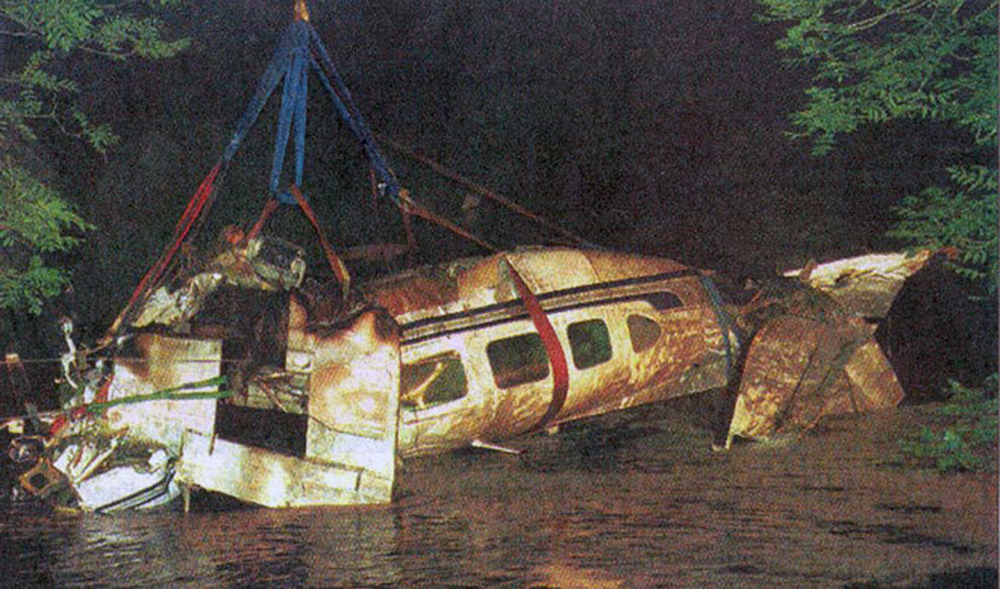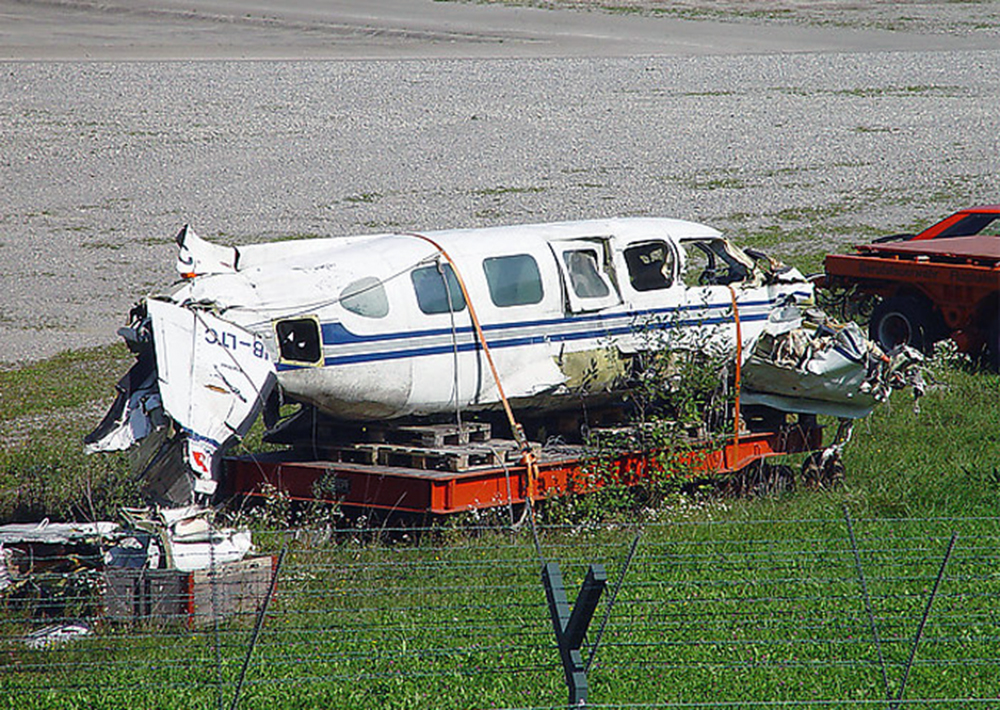Zone
Crash of a Cessna 500 Citation I/SP in Zurich
Date & Time:
Apr 7, 2003 at 1212 LT
Registration:
EC-HFA
Survivors:
Yes
Schedule:
Barcelona - Zurich
MSN:
500-0209
YOM:
1974
Crew on board:
1
Crew fatalities:
Pax on board:
2
Pax fatalities:
Other fatalities:
Total fatalities:
0
Captain / Total hours on type:
111.00
Aircraft flight hours:
13309
Aircraft flight cycles:
14054
Circumstances:
The aircraft took off at 1000LT from Barcelona (LEBL) on a private flight to Zurich (LSZH). The flight took place under instrument flight rules. Using radar vectors, EC-HFA was cleared at 1205 LT for an approach on the runway 14 instrument landing system (ILS). In the final approach phase, the aircraft entered a snow shower. The aircraft touched down on the grass about 700 metres before the runway threshold and skidded in a wide right turn in the direction of the threshold of runway 16. The aircraft was badly damaged. The three occupants were unharmed.
Probable cause:
The accident is attributable to the fact that the pilot, with insufficient visual references, continued his final approach below the minimum and the aircraft collided with the ground approximately 700 metres before the threshold of runway 14.
The following factors contributed to the accident:
• unsatisfactory flying qualification on the aircraft type involved in the accident.
• distraction by the passenger during the entire approach and at the decision height.
The following factors contributed to the accident:
• unsatisfactory flying qualification on the aircraft type involved in the accident.
• distraction by the passenger during the entire approach and at the decision height.
Final Report:
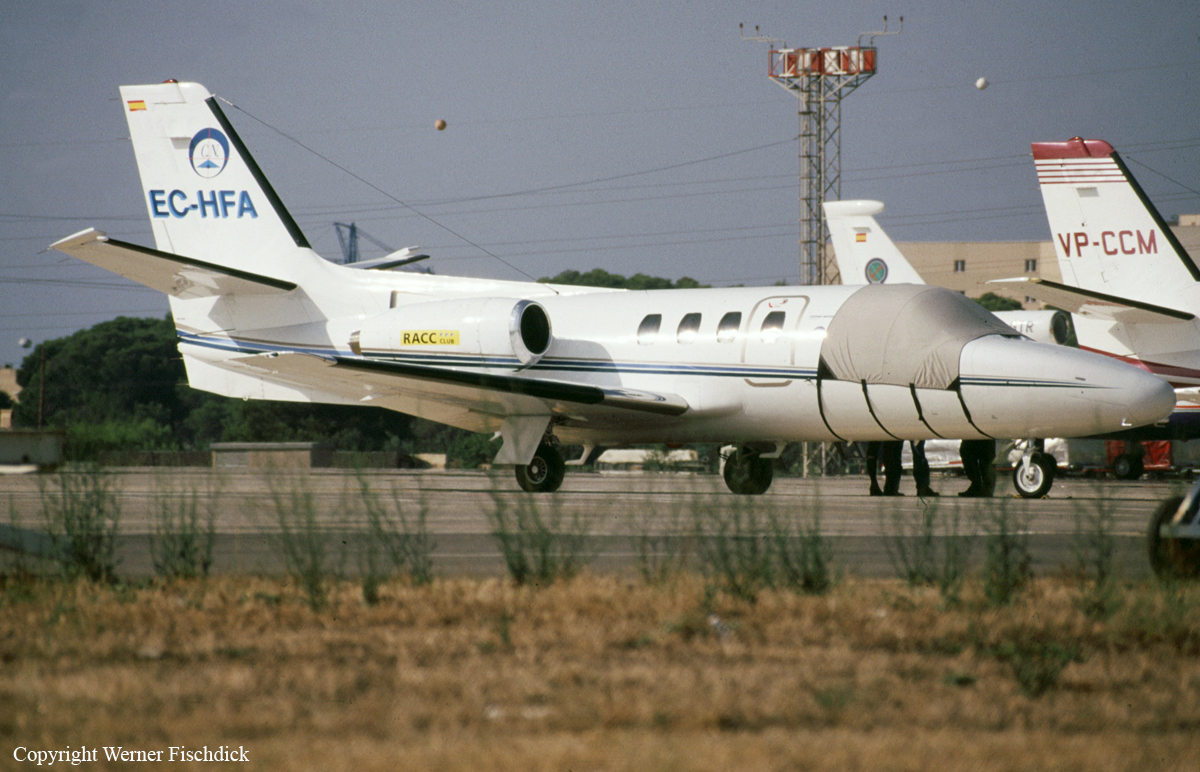
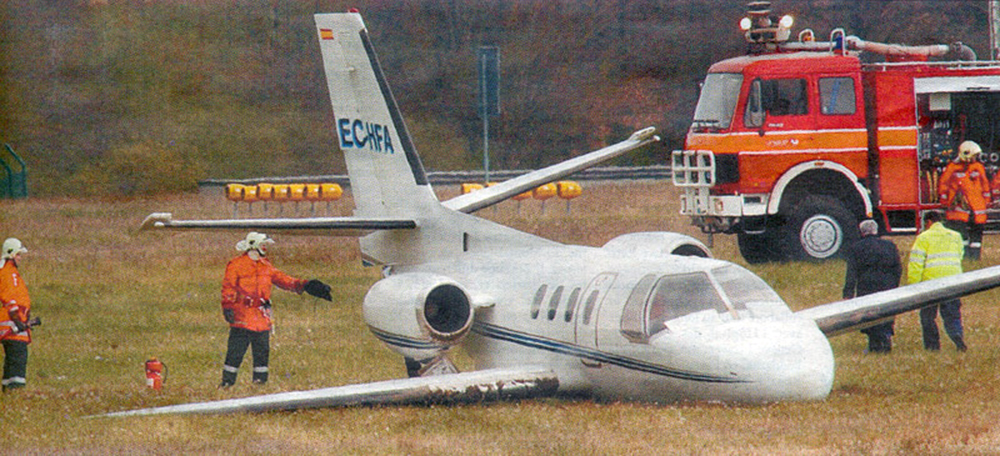
Crash of a Cessna 560 Citation V in Zurich: 2 killed
Date & Time:
Dec 20, 2001 at 2206 LT
Registration:
HB-VLV
Survivors:
No
Schedule:
Zurich - Bern
MSN:
560-0077
YOM:
1990
Flight number:
EAB220
Crew on board:
2
Crew fatalities:
Pax on board:
0
Pax fatalities:
Other fatalities:
Total fatalities:
2
Captain / Total hours on type:
250.00
Copilot / Total hours on type:
401
Aircraft flight hours:
3559
Aircraft flight cycles:
3528
Circumstances:
At 19:43:49 UTC the crew of EAB 220 called clearance delivery (CLD) for the first time and asked if their flight plan to Bern-Belp was available. The answer was in the affirmative and the CLD air traffic controller informed the crew that they would need authorisation for the landing in Bern-Belp. Once it had been clarified that this authorisation had been obtained, EAB 220 called back a little later. CLD informed the pilots that their departure was planned from runway 34. However, they would have to expect a delay at that time, as arrivals and departures were being handled in batches. EAB 220 was scheduled in the next batch for take-off. CLD intimated to the crew an approximate departure time of 20:30 UTC. When the crew called back at 20:13:49 UTC to ask for any news, CLD informed them that departure would now take place in about 45 minutes. Since visual conditions were deteriorating due to the thickening fog, air traffic control had to increase the separation between arriving aircraft. As a result, flight EAB 220’s estimated departure time was delayed to about 21:00 UTC. At 20:24:38 UTC CLD transmitted to the crew a departure clearance. Flight EAB 220 was assigned the standard instrument departure (SID) “WILLISAU 3N” and transponder code 1403. In addition, a departure time of 21:07 UTC was estimated. The CEO of Eagle Air Ltd. had applied in Bern-Belp for a special authorisation for a late landing after 21:00 UTC and obtained a slot until 21:30 UTC at the latest. Since the departure of HB-VLV in Zurich was being further and further delayed, the crew found themselves under increasing time pressure. The crew were in contact with the CEO several times; at the time, the latter was performing the function of the dispatcher. In order to ensure the arrival of HB-VLV in Bern-Belp by 21:30 UTC at the latest, he also telephoned the duty manager in Zurich control tower and urged him several times for an earlier departure time. After a frequency change to apron control, the apron controller cleared EAB 220 to start its engines at 20:43:50 UTC. Approximately at the same time, an airport manager observed that HB-VLV’s right-hand engine was running, although only one pilot was present in the cockpit. He was sitting in the right-hand seat. The other crew member, probably the commander, was using a scraper to remove ice deposits from the left wing. The eye witness later observed how this crew member occupied the left-hand position in the cockpit, shortly before taxiing. Since the pilots were eager to leave their stand in the General Aviation Centre (GAC) Sector 1 as quickly as possible, they were cleared to taxi as far as the holding point for runway 28 just 2 minutes later. There they had to wait for a taxiing Saab 2000 to pass in the opposite direction. EAB 220 was then instructed by the apron controller to continue taxiing to the holding point for runway 34 via taxiways ALPHA, INNER and ECHO. One minute after taxi clearance had been given, the crew of EAB 220 again asked for the wording of this clearance: “Swiss Eagle 220, sorry for that, can you say the clearance again?” It must remain open whether HB-VLV had missed the intersection in the direction of the INNER taxiway. It is clear, however, that the apron controller had to intervene shortly afterwards with a correction: “220, continue on taxiway INNER, INNER, and then ECHO to Holding Point 34, Echo 9”. At 20:56:50 UTC flight EAB 220 made contact with Aerodrome Control (ADC) and stated that the aircraft was on Echo 9 just before the start of runway 34. The air traffic controller (ATCO) requested the crew to wait short of runway 34, since approaches were still taking place in the opposite direction on runway 16. At 21:04:51 UTC ADC cleared the aircraft to line up on runway 34. The crew taxied onto runway 34 and – after they had received take-off clearance at 21:05:54 UTC – initiated a rolling take-off by setting take-off power. At this time, meteorological visibility was 100 m with partial fog. Since the left-hand engine was run up within six seconds to 102 percent of take-off power and the right-hand engine to 58 percent, for a few seconds during the acceleration phase the aircraft veered on the runway to such an extent that it’s heading changed 10 degrees to the right. The crew were only able to bring the aircraft back into alignment with the runway by making a major nose-wheel control correction and by distinctly reducing the thrust of the left-hand engine. Afterwards the two engines were brought synchronously to take-off power and the take-off continued. Flight EAB 220 lifted off from runway 34 at 21:06:40 UTC. Shortly after take-off, the commander of EAB 220 acknowledged the request to change frequency to departure control. At about the same time various members of the airport fire-fighting services, who were inside and in front of the fire-fighting unit satellite “North” between runways 34 and 32, heard noises and saw visual indications of a low-flying aircraft. Immediately afterwards the noise of a crash and the flash of a fire were noted. At 21:07 UTC the aircraft impacted onto the frozen ground 400 m to the south-east of the end of runway 34 and skidded in a northerly direction, leaving a trail of debris. The main body of the wreck finally came to rest 500 m beyond the site of initial impact on runway 14/32. The rescue services reached the burning wreck after a few minutes. DFDR data revealed that the autopilot was disengaged during the whole flight.
Probable cause:
The accident is attributable to the fact that the crew of HB-VLV did not continue their climb after take-off. As a result the aircraft came in a descent and collided with the terrain.
The investigation determined the following causal factor for the accident:
• With a high degree of probability the crew lost spatial orientation after take-off, leading to an unintentional loss of altitude.
The following factors contributed to the accident:
• The copilot’s basic training in instrument flying did not include night instrument take-offs.
• The crew’s method of working was adversely affected by great time pressure.
• Executing the take-off as a rolling take-off was not adapted to the prevailing meteorological conditions.
• There was no system in the aircraft which triggers an alarm in the event of a loss of altitude after take-off (GPWS).
• The instrumentation on the copilot’s side of the aircraft involved in the accident was not optimal.
The investigation determined the following causal factor for the accident:
• With a high degree of probability the crew lost spatial orientation after take-off, leading to an unintentional loss of altitude.
The following factors contributed to the accident:
• The copilot’s basic training in instrument flying did not include night instrument take-offs.
• The crew’s method of working was adversely affected by great time pressure.
• Executing the take-off as a rolling take-off was not adapted to the prevailing meteorological conditions.
• There was no system in the aircraft which triggers an alarm in the event of a loss of altitude after take-off (GPWS).
• The instrumentation on the copilot’s side of the aircraft involved in the accident was not optimal.
Final Report:
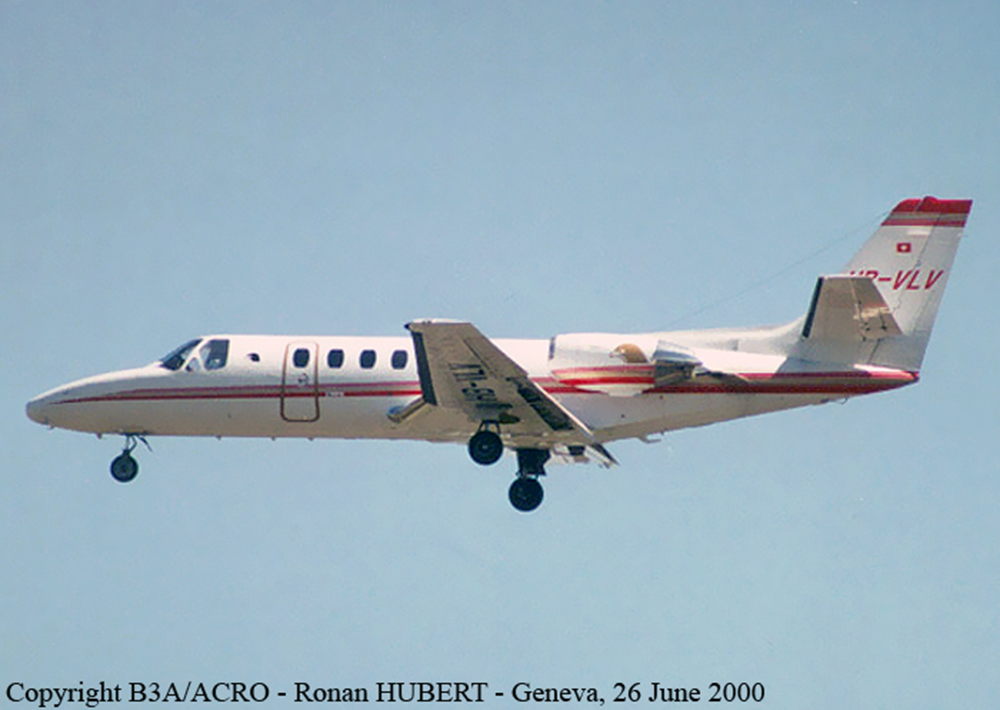
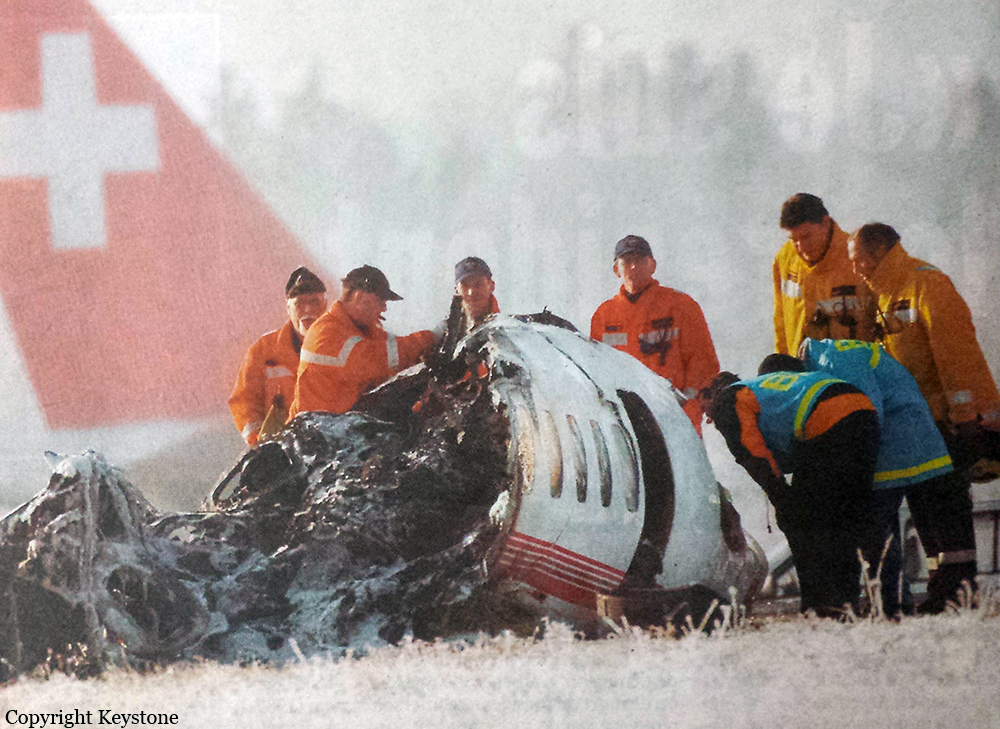
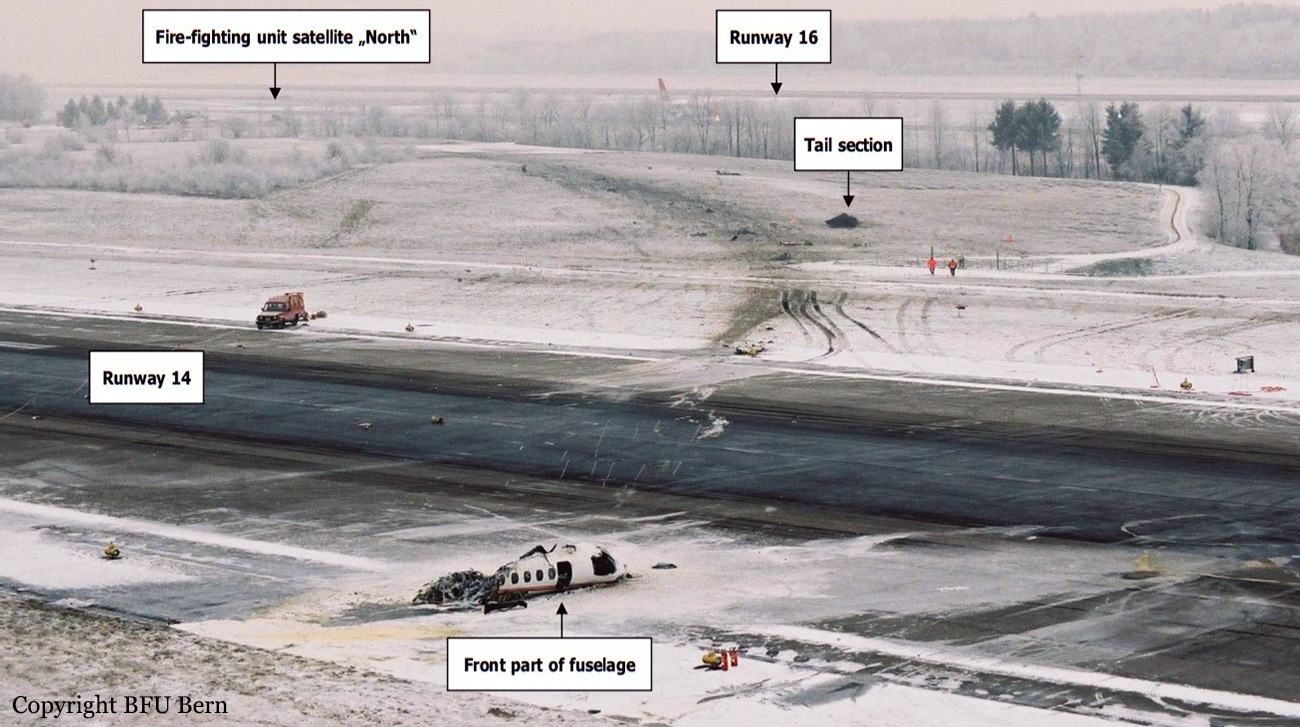
Crash of an Avro RJ100 in Zurich: 24 killed
Date & Time:
Nov 24, 2001 at 2207 LT
Registration:
HB-IXM
Survivors:
Yes
Schedule:
Berlin - Zurich
MSN:
E3291
YOM:
1996
Flight number:
LX3597
Crew on board:
5
Crew fatalities:
Pax on board:
28
Pax fatalities:
Other fatalities:
Total fatalities:
24
Captain / Total hours on type:
287.00
Copilot / Total hours on type:
348
Aircraft flight hours:
13194
Aircraft flight cycles:
11518
Circumstances:
On 24 November 2001 at 20:01 UTC the aircraft AVRO 146 RJ 100, registered as HB-IXM of the Crossair airline company took off in darkness from runway 26L at Berlin-Tegel airport as scheduled flight CRX3597 to Zurich. At 20:58:50 UTC, after an uneventful flight, the aircraft received the clearance for a standard VOR/DME approach 28 at Zurich airport.Ahead of the aircraft involved in the accident, an Embraer EMB 145, flight CRX3891, landed on runway 28 at Zurich airport. The crew informed the control tower that the weather was close to the minimum for this runway. At 21:05:21 UTC flight CRX3597 reported on the aerodrome control frequency. When the aircraft reached the minimum descent altitude (MDA) of 2,390 feet QNH at 21:06:10, the commander mentioned to the copilot that he had certain visual ground contact and continued the descent. At 21:06:36 UTC the aircraft collided with treetops and subsequently crashed into the ground. The aircraft caught fire on impact. Twenty-one passengers and three crew members died from their injuries at the site of the accident; seven passengers and two crew members survived the accident. The wreckage was found in the Geissbühl forest, 4,050 metres short of runway 28.
Probable cause:
The accident is attributable to the fact that on the final approach, in own navigation, of the standard VOR/DME approach 28 the aircraft flew controlled into a wooded range of hills (controlled flight into terrain – CFIT), because the flight crew deliberately continued the descent under instrument flight conditions below the minimum altitude for the approach without having the necessary prerequisites. The flight crew initiated the go around too late.
The investigation has determined the following causal factors in relation to the accident:
• The commander deliberately descended below the minimum descent altitude (MDA) of the standard VOR/DME approach 28 without having the required visual contact to the approach lights or the runway.
• The copilot made no attempt to prevent the continuation of the flight below the minimum descent altitude.
The following factors contributed to the accident:
• In the approach sector of runway 28 at Zurich airport there was no system available which triggers an alarm if a minimum safe altitude is violated (minimum safe altitude warning – MSAW).
• Over a long period of time, the responsible persons of the airline did not make correct assessments of the commander’s flying performance. Where weaknesses were perceptible, they did not take appropriate measures.
• The commander’s ability to concentrate and take appropriate decisions as well as his ability to analyse complex processes were adversely affected by fatigue.
• Task-sharing between the flight crew during the approach was not appropriate and did not correspond to the required procedures by the airline.
• The range of hills which the aircraft came into contact with was not marked on the approach chart used by the flight crew.
• The means of determining the meteorological visibility at the airport was not representative for the approach sector runway 28, because it did not correspond to the actual visibility.
• The valid visual minimums at the time of the accident were inappropriate for a decision to use the standard VOR/DME approach 28.
The investigation has determined the following causal factors in relation to the accident:
• The commander deliberately descended below the minimum descent altitude (MDA) of the standard VOR/DME approach 28 without having the required visual contact to the approach lights or the runway.
• The copilot made no attempt to prevent the continuation of the flight below the minimum descent altitude.
The following factors contributed to the accident:
• In the approach sector of runway 28 at Zurich airport there was no system available which triggers an alarm if a minimum safe altitude is violated (minimum safe altitude warning – MSAW).
• Over a long period of time, the responsible persons of the airline did not make correct assessments of the commander’s flying performance. Where weaknesses were perceptible, they did not take appropriate measures.
• The commander’s ability to concentrate and take appropriate decisions as well as his ability to analyse complex processes were adversely affected by fatigue.
• Task-sharing between the flight crew during the approach was not appropriate and did not correspond to the required procedures by the airline.
• The range of hills which the aircraft came into contact with was not marked on the approach chart used by the flight crew.
• The means of determining the meteorological visibility at the airport was not representative for the approach sector runway 28, because it did not correspond to the actual visibility.
• The valid visual minimums at the time of the accident were inappropriate for a decision to use the standard VOR/DME approach 28.
Final Report:
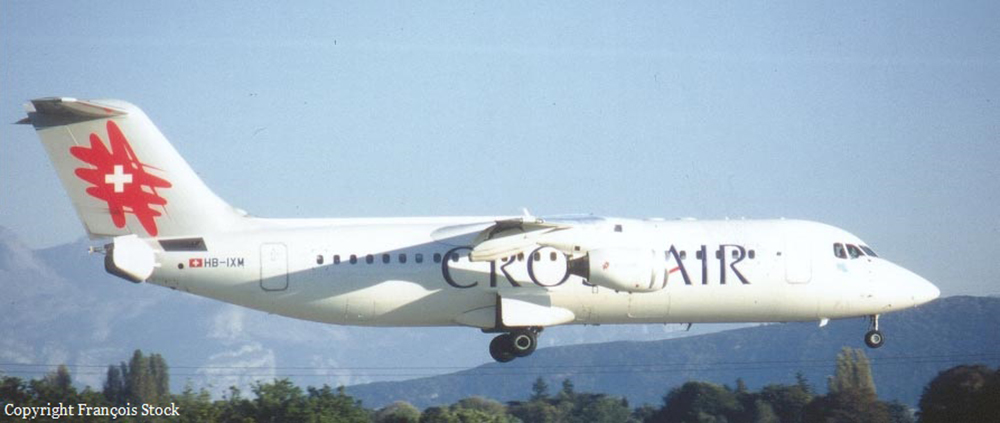
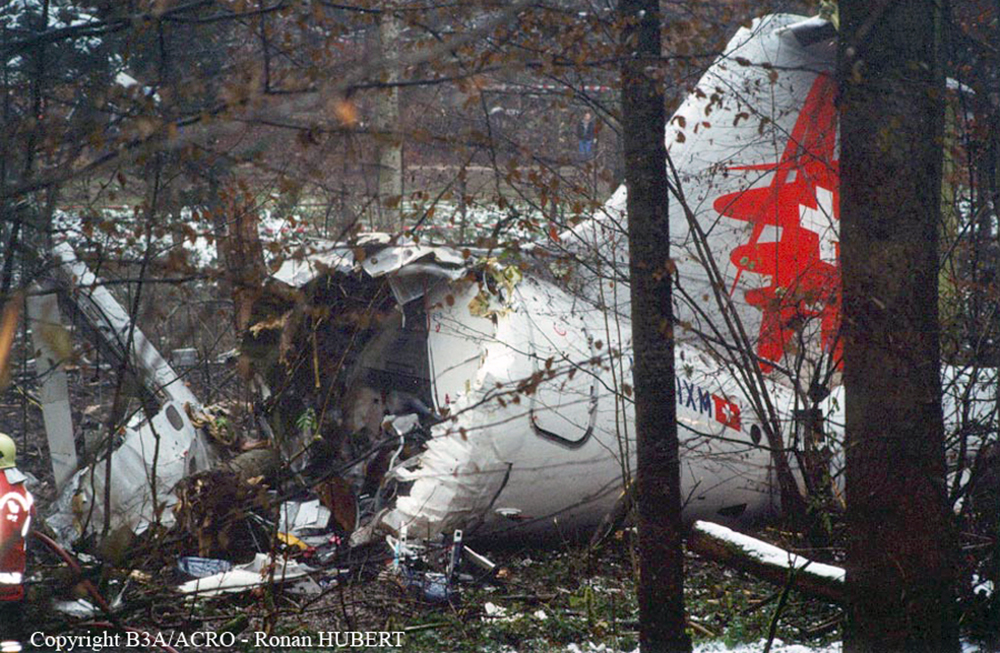

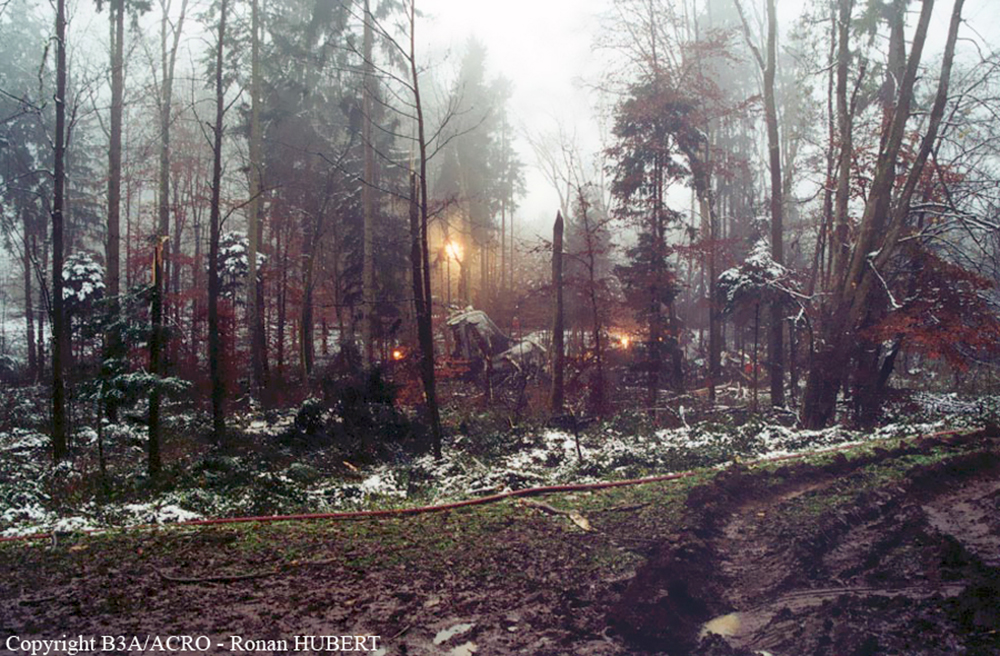

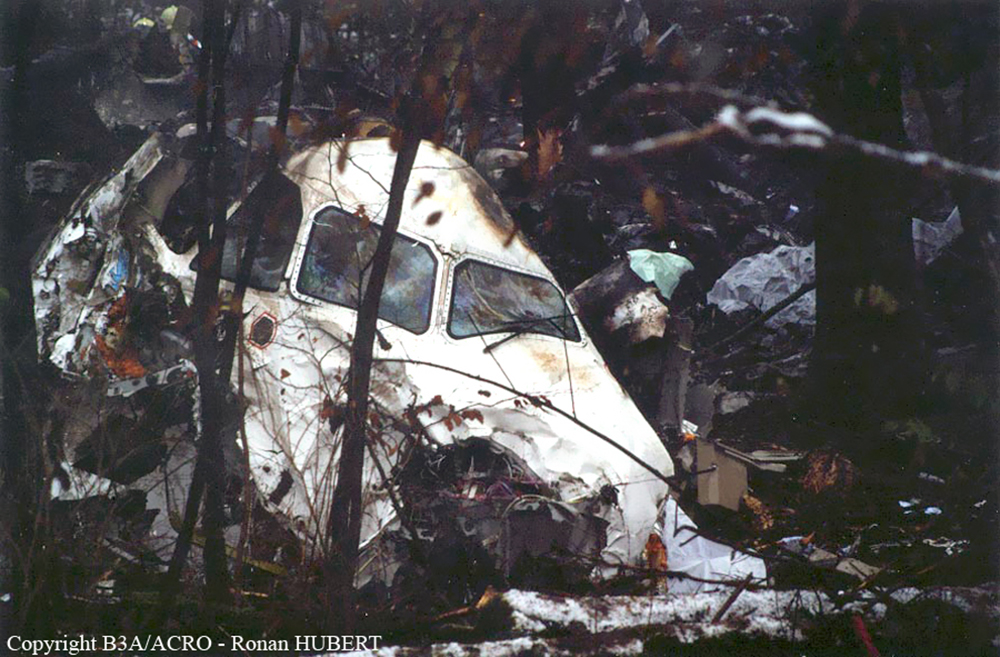
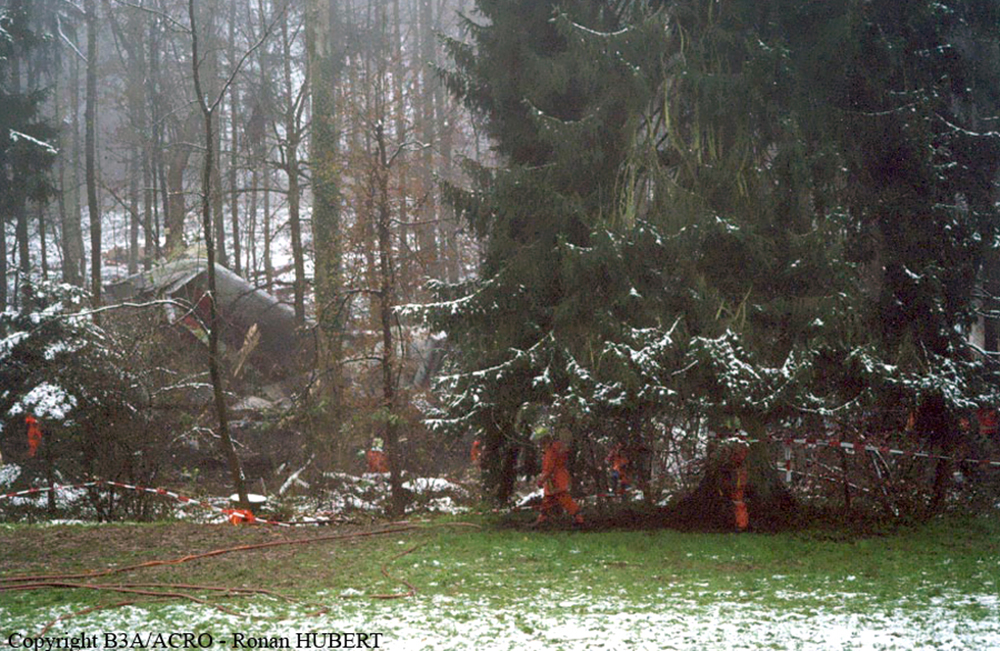
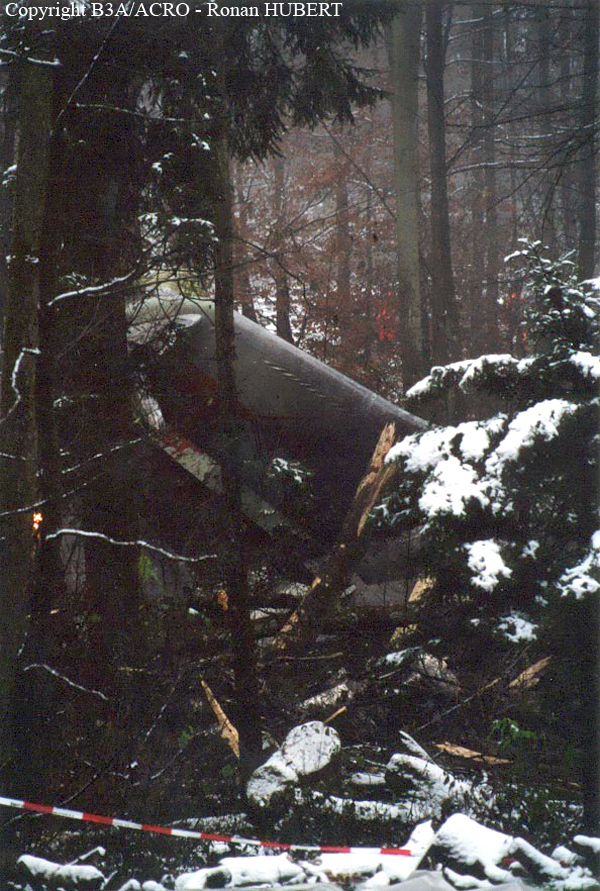
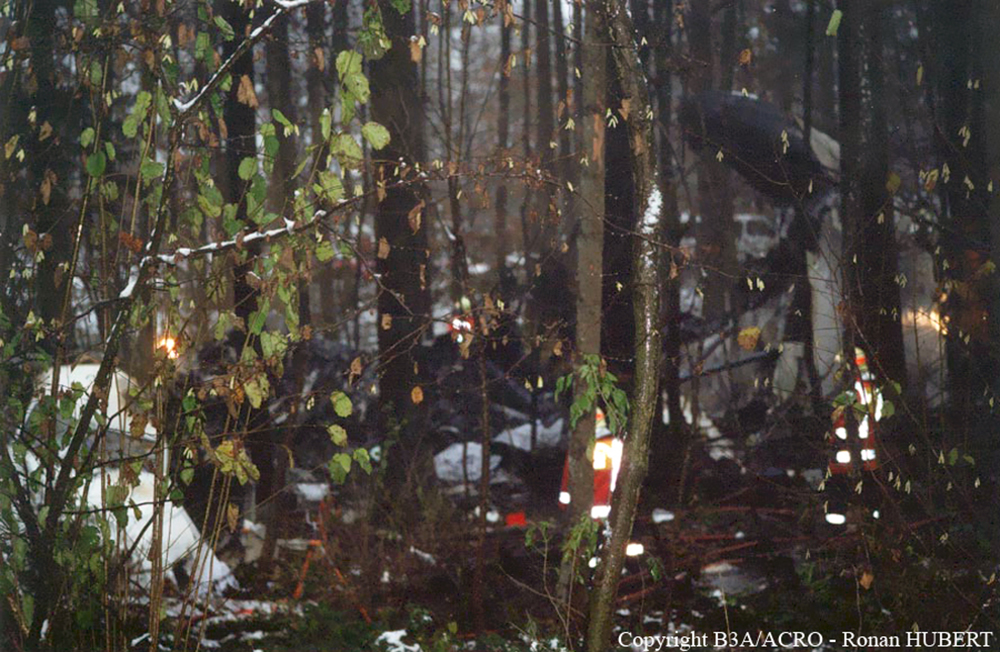
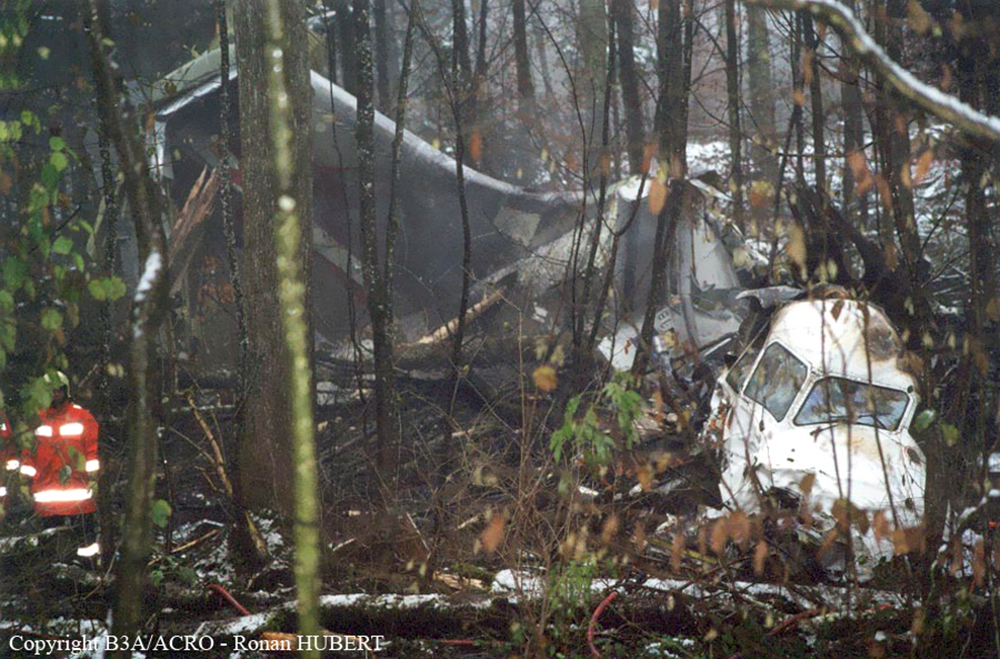
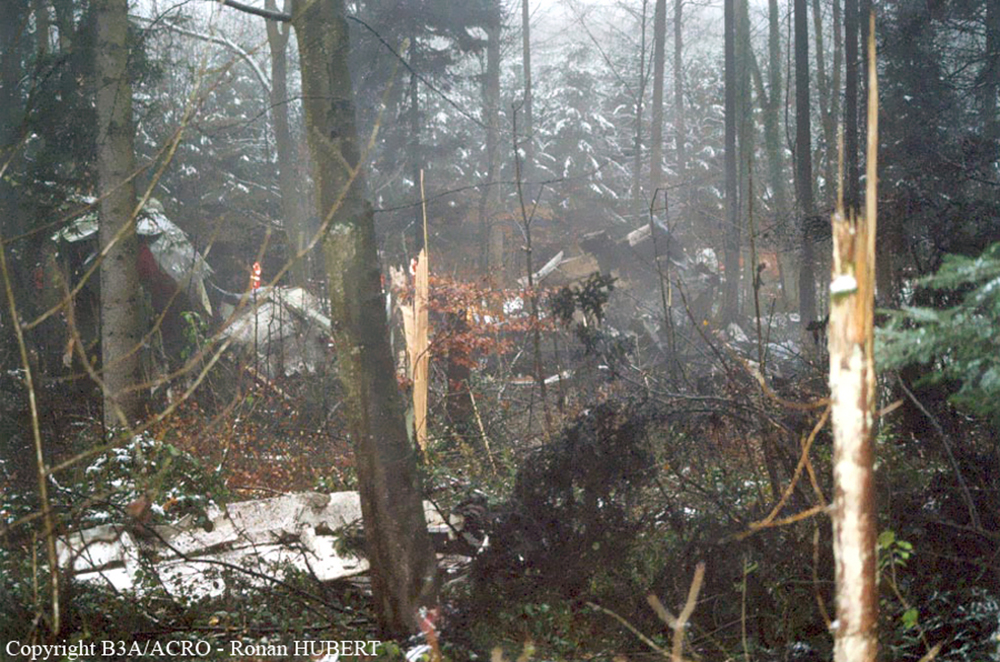
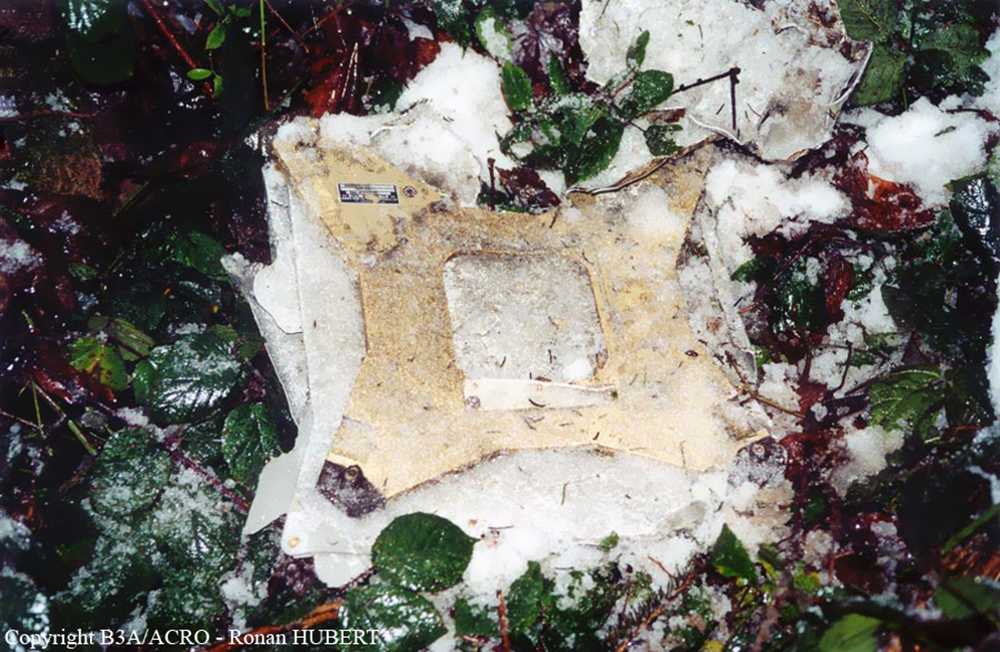
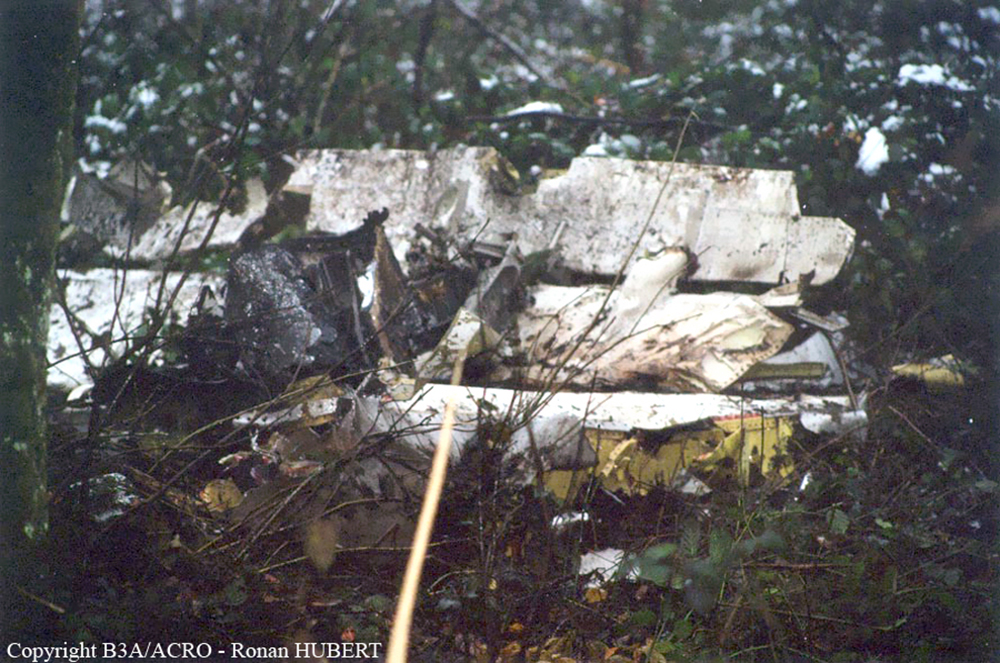
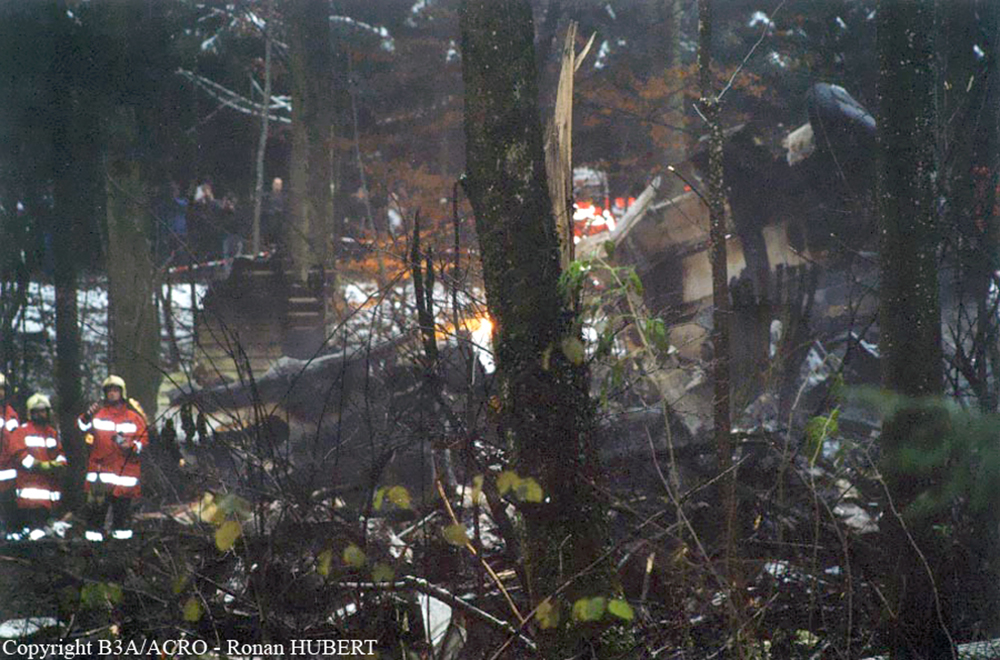
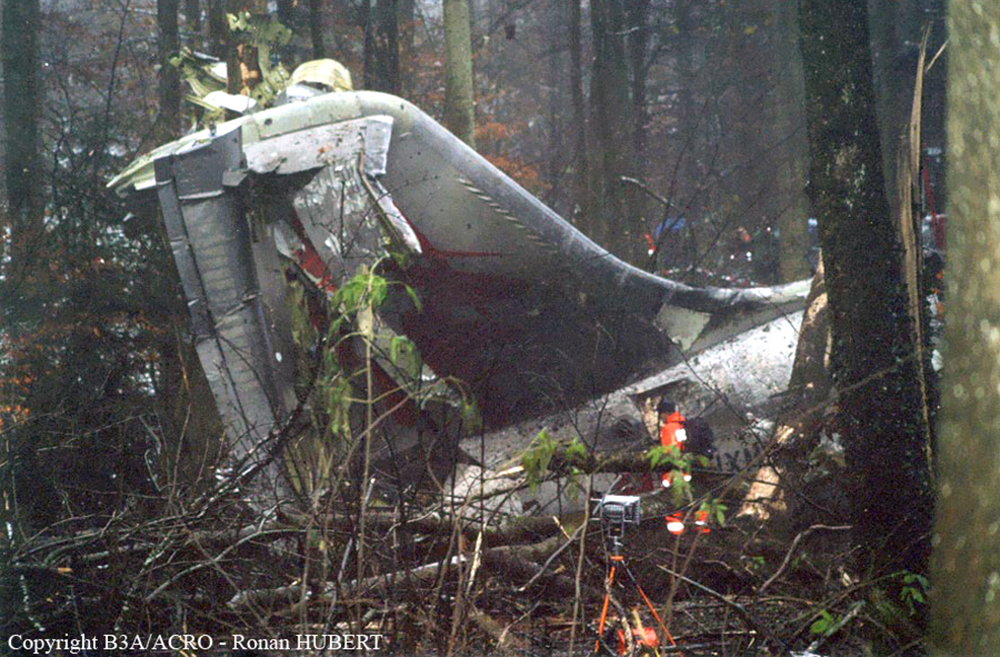
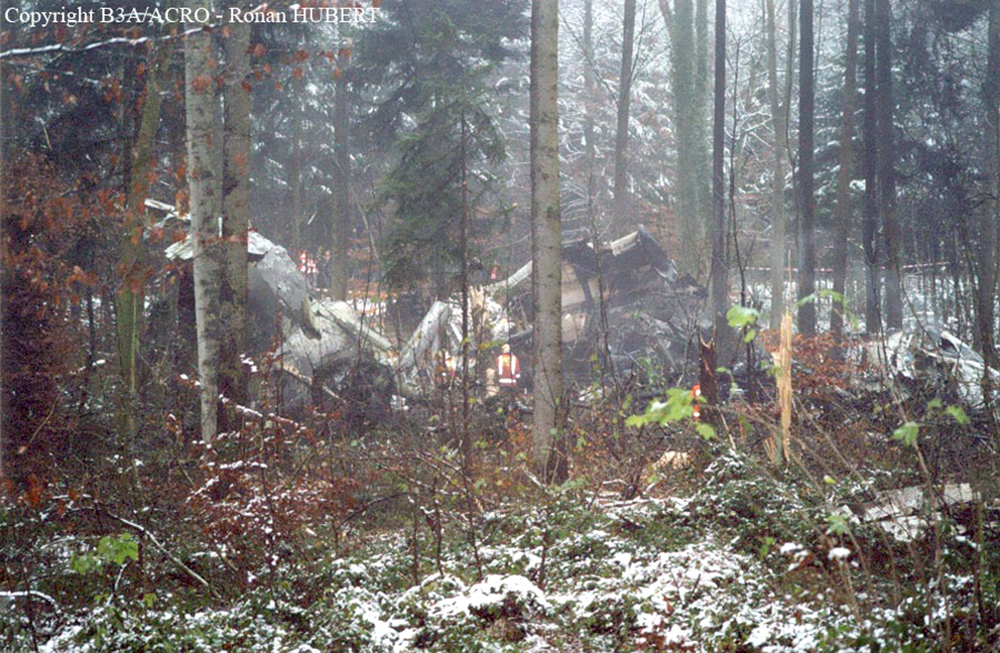
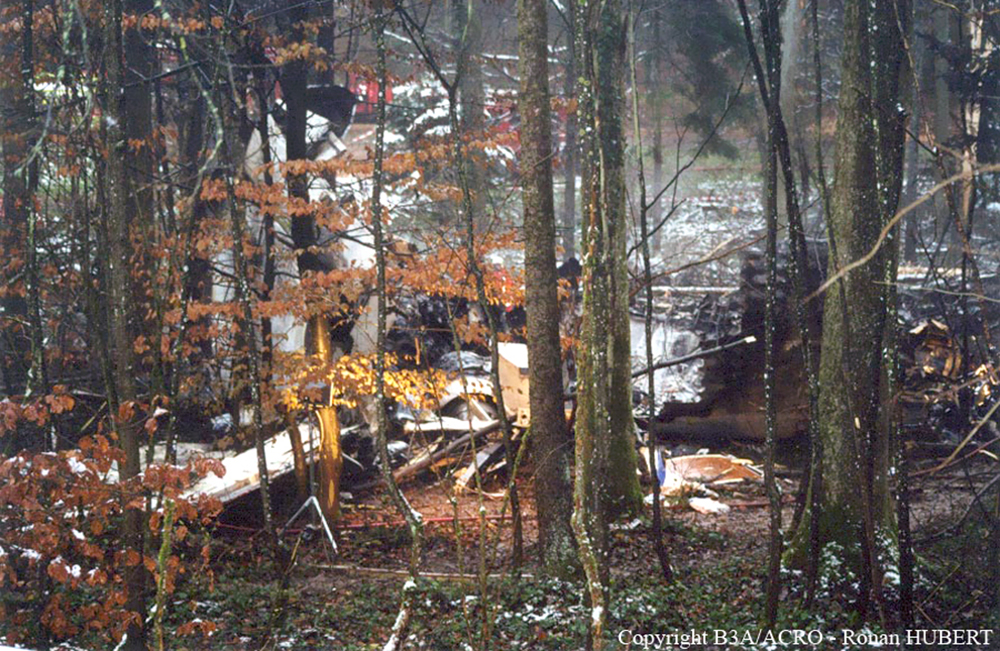
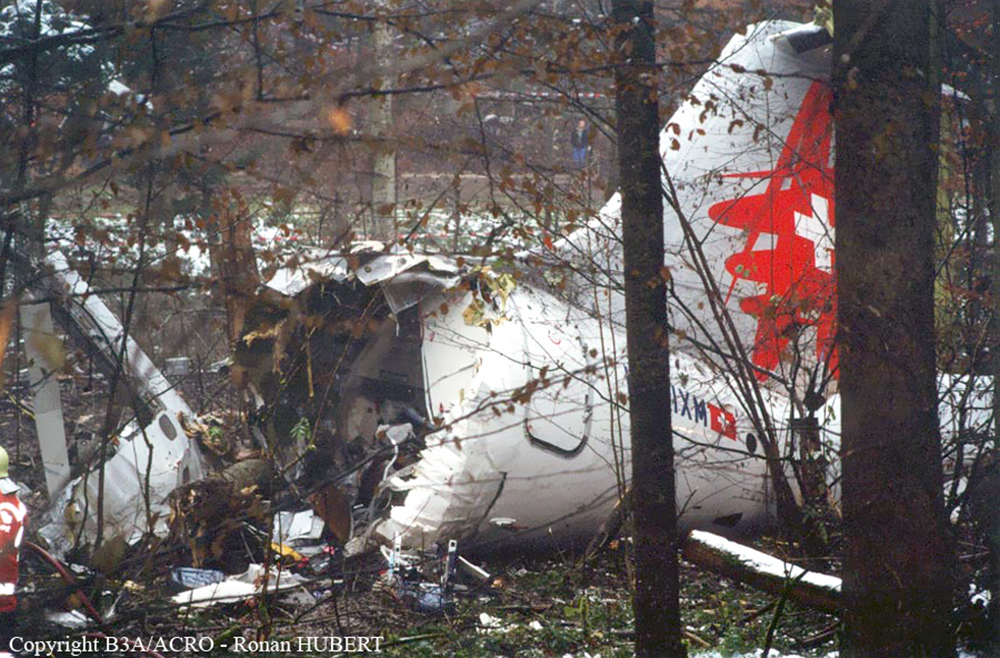
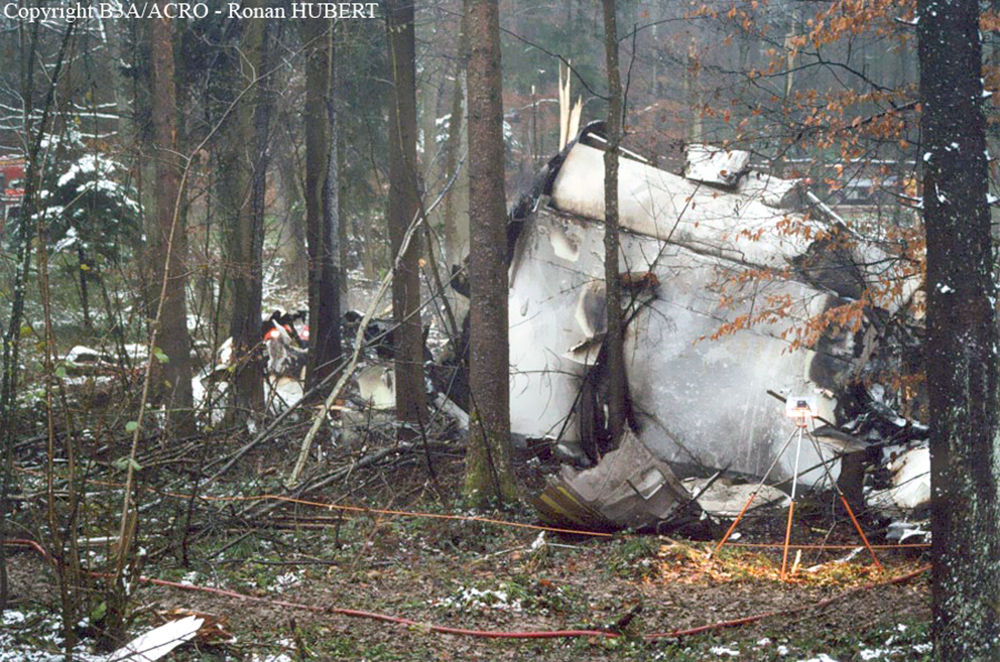
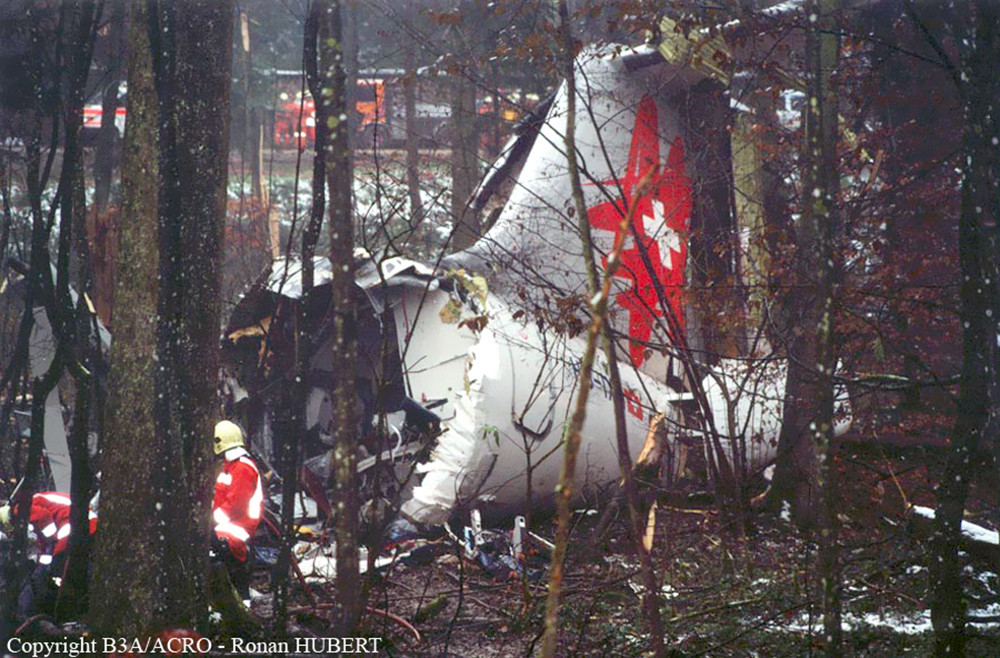
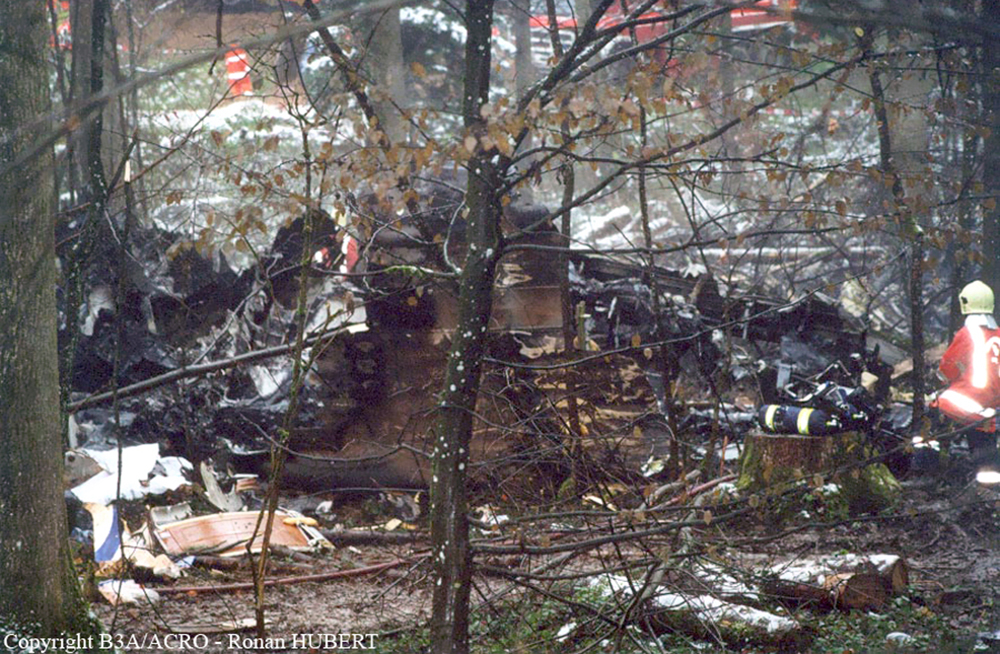

Crash of a Piper PA-42-1000 Cheyenne 400LS in Nuremberg: 1 killed
Date & Time:
May 5, 2001 at 1631 LT
Registration:
D-IMAY
Survivors:
No
Schedule:
Nuremberg – Zurich
MSN:
42-5527024
YOM:
1985
Crew on board:
1
Crew fatalities:
Pax on board:
0
Pax fatalities:
Other fatalities:
Total fatalities:
1
Circumstances:
The twin engine aircraft departed Nuremberg Airport runway 10 at 1628LT on a private flight to Zurich. During initial climb, at a height of 2,000 feet, the pilot was cleared to climb to 13,000 feet at his discretion. While climbing to a height of 4,500 feet, the aircraft stalled but quickly climbed again to 4,700 feet. Suddenly, control was lost and the aircraft entered a dive before crashing in a wooded area located along the motorway A3. The accident occurred three minutes after takeoff and the wreckage was found about 3,5 km east of the airport. The aircraft was destroyed and the pilot, sole on board, was killed. At the time of the accident, weather conditions were good with a 10 km visibility and a wind from 010 at 10 knots.
Probable cause:
No technical anomalies were found on the aircraft, the instruments and the engines. The aircraft' speed increased to 280 knots during the dive. The assumption that the pilot suffered a heart attack was not ruled out.
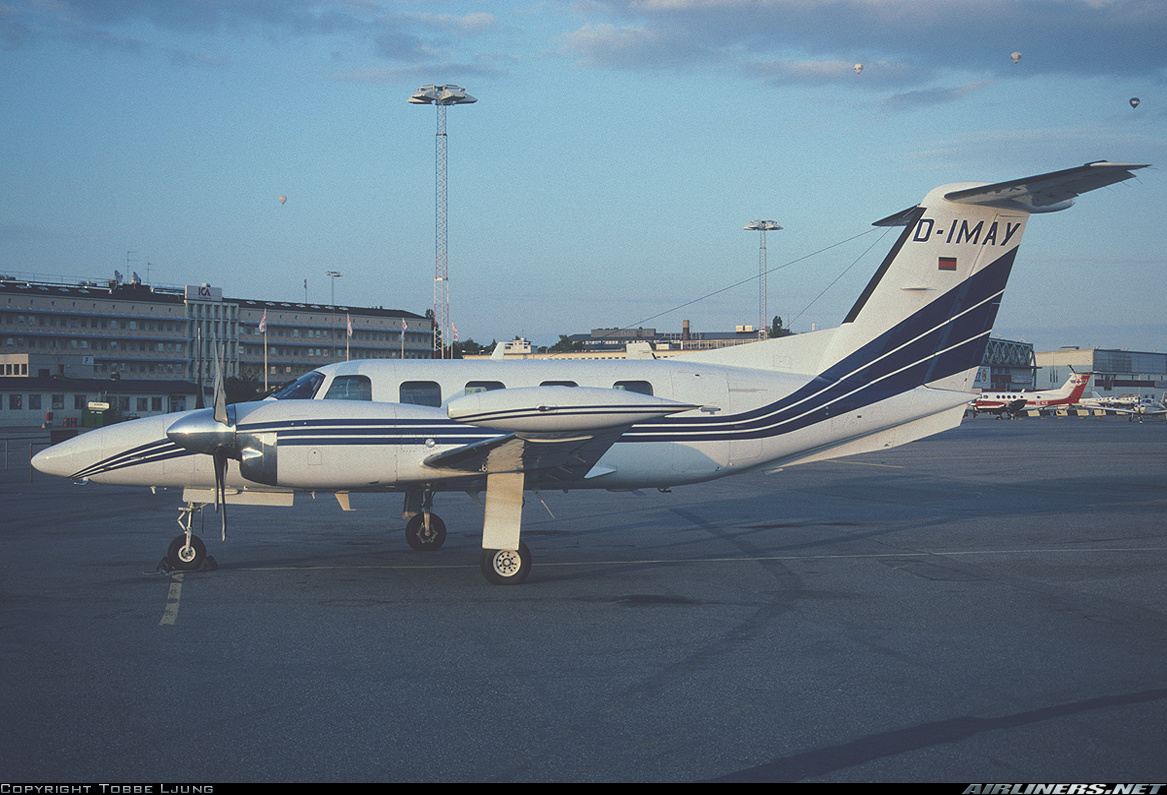

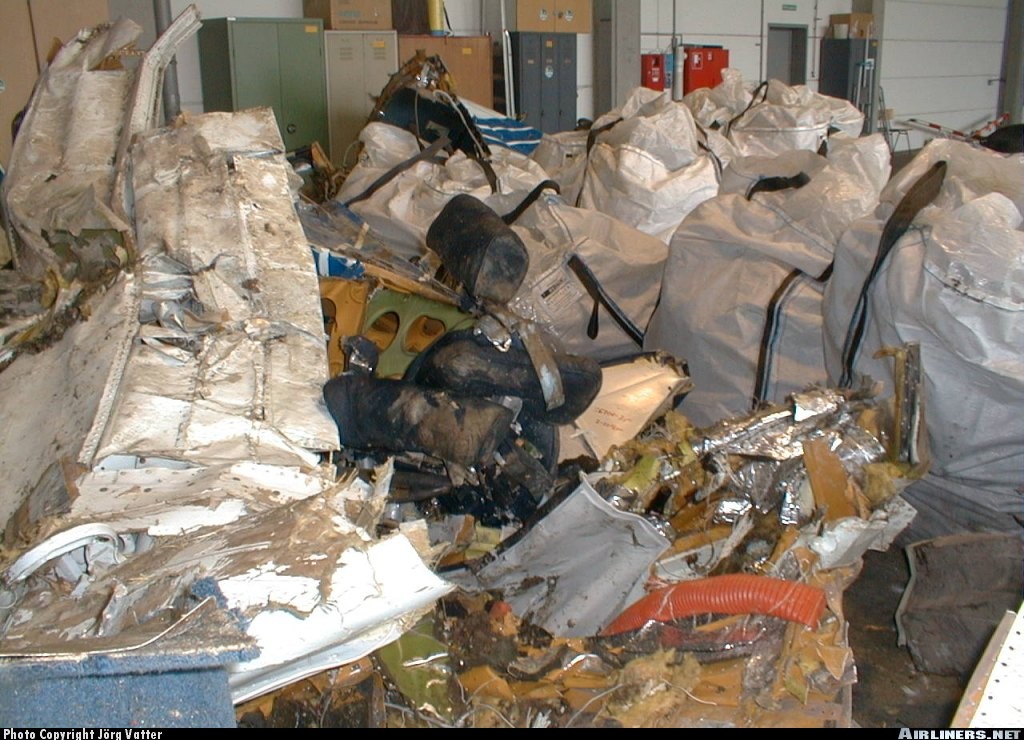
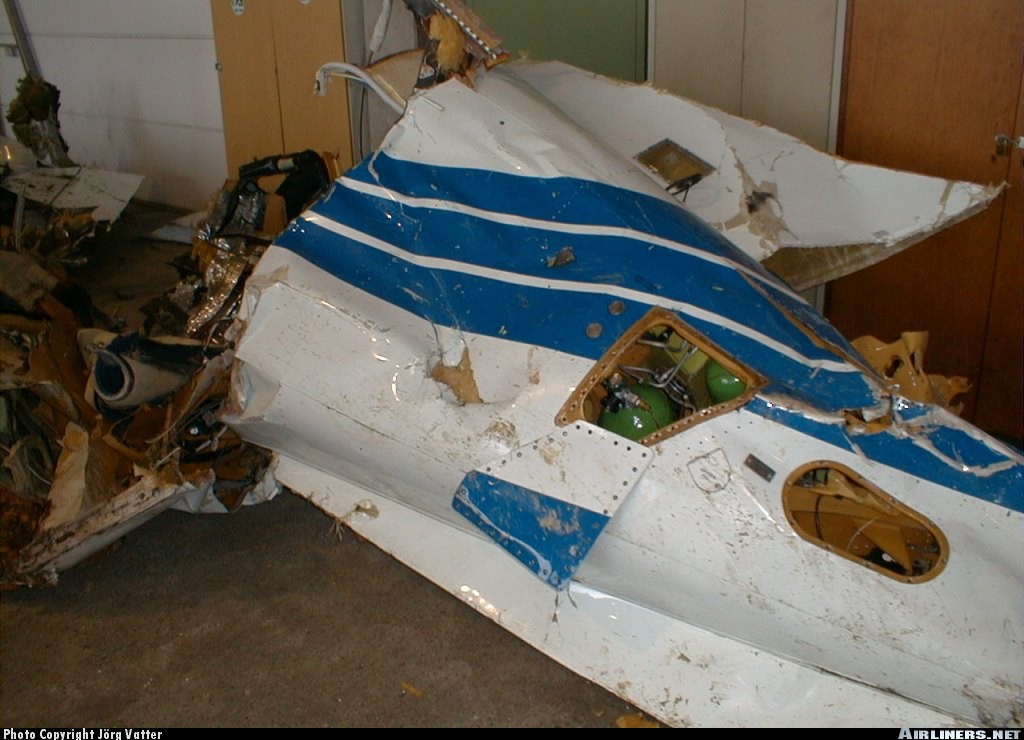
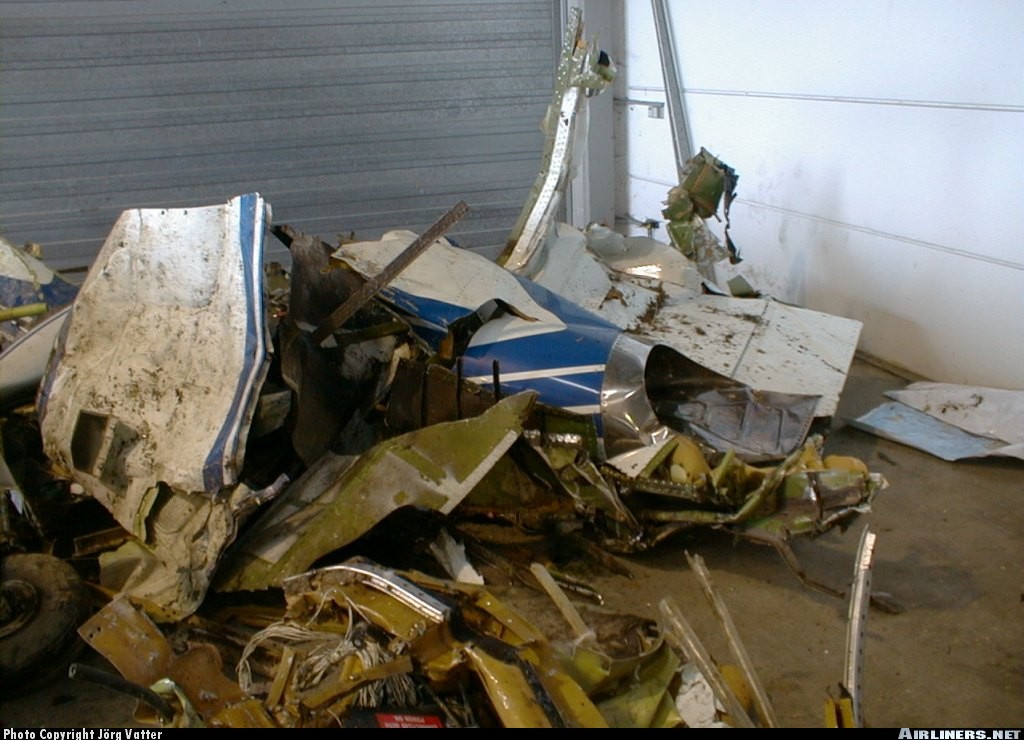
Crash of a Piper PA-31-350 Panther II in Zurich: 1 killed
Date & Time:
May 26, 2000 at 2023 LT
Registration:
HB-LTC
Survivors:
No
Schedule:
Zurich - Geneva
MSN:
31-7952003
YOM:
1979
Flight number:
HBLTC
Crew on board:
1
Crew fatalities:
Pax on board:
0
Pax fatalities:
Other fatalities:
Total fatalities:
1
Captain / Total hours on type:
9.00
Aircraft flight hours:
8387
Circumstances:
On 25 and 26 May 2000 aircraft HB-LTC was used for a commercial flight from Zurich to Béziers (F) and back. To this end, the pilot made a positioning flight from Geneva to Zurich on 24 May 2000. The reconstruction of the following events is based on recorded radio conversations and witness statements. On 25 May 2000 at approx. 07:20 hrs, the pilot placed a telephone order with the refuelling service of Jet Aviation Zurich AG. According to statements from aircraft refuelling attendant A concerned, the pilot asked for the aircraft to be fully refuelled with aviation gasoline (AVGAS) for a flight to France. When aircraft refuelling attendant A arrived at the aircraft, the pilot was present. The refuelling attendant saw the winglets on the HB-LTC and asked the pilot whether the machine had been modified and therefore needed jet kerosene. Before the pilot could even answer, the refuelling attendant realised, from the square engine housings, that the machine was equipped with reciprocating engines. The pilot confirmed that HB-LTC had been modified but pointed out that this modification involved only the airframe and that the aircraft had not been converted to turboprop operation. Refuelling attendant A then filled the HB-LTC’s four fuel tanks with 372 l of AVGAS 100LL (low lead). The aircraft was therefore fully refuelled and at that time had 726 l of fuel. Refuelling attendant A later reported that he had not noticed markings which described the types of fuel permitted for this aircraft, either on the wing or on the tank seals. During the refuelling operation, which ended at approx. 07:30 hrs, the pilot was in the cockpit. Nobody observed him draining the tanks after refuelling. The seven passengers for the flight to Béziers (F) arrived on 25 May 2000 at about eight o’clock in the morning at the General Aviation Centre (GAC) at Zurich airport. At 08:18:42 hrs the pilot received start-up clearance from Zurich Apron (ZRH APR) and at 08:26:25 hrs indicated that he was ready to taxi. Taxi clearance was granted without delay and the aircraft taxied to the holding point of runway 28. Several passengers later stated that the pilot carried out a run up of the engines while the following time of waiting. At 08:32:01 hrs HB-LTC indicated to aerodrome control (Zurich Tower – ZRH TWR) that it was ready to take off. The aircraft was queued in the traffic and was cleared for take-off at 08:45:27 hrs. The aircraft landed in Béziers (F) some two hours later. On 26 May 2000 between 15:35 and 15:45 hrs HB-LTC was refuelled in Béziers with 107 l of AVGAS 100LL. The aircraft then flew with the same passengers from Béziers (F) back to Zurich, where it landed at 19:10 hrs. Before the flight back to Geneva, the pilot obviously decided to refuel. According to the statements of aircraft refuelling attendant B at approx. 19:45 hrs the pilot ordered “Kraftstoff JET-A1” by telephone. Unlike the telephone conversations of air traffic control at Zurich airport, incoming and outgoing telephone calls made to and from the refuelling service of Jet Aviation Zurich AG were not recorded. The precise wording of the pilot’s fuel order cannot therefore be established with certainty. Aircraft refuelling attendant B then forwarded the order by radio to his colleague, aircraft refuelling attendant C. A third aircraft refuelling attendant D heard on his radio how aircraft refuelling attendant B gave the instruction to aircraft refuelling attendant C to refuel aircraft HB-LTC with JET A-1 fuel. Then aircraft refuelling attendant C drove tanker FL 7 to HB-LTC, which was parked in GAC Sector 1. According to his statements, he positioned the tanker with its right-hand side in front of the aircraft so that he could reach the filler caps on both wings using the hose affixed to that side of the tanker. Then aircraft refuelling attendant C, still next to the tanker, began to complete the delivery note, while the pilot came up to him and indicated the desired quantity of fuel in English. The pilot gave him a credit card and aircraft refuelling attendant C then explained to him that after refuelling he would have to complete the transaction in the office. The pilot remarked that he had a slot. Aircraft refuelling attendant C later stated that this gave him to understand that the pilot did not have much time. The aircraft refuelling attendant replied to the pilot that he would only need an additional two or three minutes. Because it had started to rain shortly before refuelling, the pilot evidently withdrew into the aircraft after his conversation with aircraft refuelling attendant C. According to his partner, the pilot conducted a brief conversation with her from his mobile telephone during this phase. As the investigation showed, this telephone call took place between 19:50:06 and 19:51:28 hrs. In the meantime, aircraft refuelling attendant C had connected HB-LTC to the tanker and then pumped 50 l of JET A-1 fuel into each of the two inboard main cells. The aircraft refuelling attendant later stated that he had not noticed markings or labels which described the permitted types of fuel for this aircraft, either on the tank seals or in the vicinity of the tank openings. He then drove the tanker to the office, debited the credit card and returned it with the receipt and the delivery note to the aircraft. He presented the debit slip and the delivery note to the pilot for signature. In the process the aircraft refuelling attendant asked the pilot what aircraft type HB-LTC was. The pilot answered that his aircraft was a modified PA31. The aircraft refuelling attendant then entered “PA31” on the delivery note and then gave the pilot the carbon copy. At 20:08:44 hrs the pilot made radio contact with Zurich Clearance Delivery (ZRH CLD) air traffic control and received departure clearance with the instruction to change to the ZRH APR frequency for start-up clearance. The apron gave HB-LTC start-up clearance at 20:10:00 hrs. Three minutes and 50 seconds later the pilot requested taxi clearance and was then instructed to taxi to the holding point of runway 28. After the transfer to ZRH TWR at 20:15:02 hrs the pilot stated he was ready for take off at 20:17:30 hrs. A short time after this he was able to line up runway 28 and at 20:20:58 hrs ZRH TWR gave him take-off clearance. According to witness statements, HB-LTC took off normally and went into a climb. In the region of runway intersection 28/16 and at an altitude of approx. 50 m AGL the aircraft stopped climbing, maintained level flight briefly and began to descend slightly. At the same time, HB-LTC began to make a gentle right turn and overflew the woods to the north of runway 28. Because of this unusual flight pattern, the duty aerodrome controller (ADC) at 20:22:08 hrs asked the pilot whether everything was normal: “Tango Charlie, normal operations?” The pilot replied in the negative: “(Ne)gative, Hotel Tango Charlie!” In this phase, the aircraft began to make a left turn with a high bank angle and witnesses observed that the landing gear was lowered. At 20:22:21 hrs the pilot radioed that he was in an emergency situation: “Mayday, Mayday, Mayday, Hotel Tango Charlie”. During the first 90° of the turn, HB-LTC descended only slightly. After crossing the extended centerline of runway 28 the aircraft increasingly lost height in the tight left turn. When the aircraft had almost completed the full turn, its bank attitude began to reduce. At a height of approx. 10 m AGL HB-LTC collided with the trees in a copse. The aircraft passed through the copse and came to rest upside down in the “Glatt” river. The pilot was fatally injured on impact. Coordinates of the final position of the wreck: 682 700/256 700, elevation 420 m AMSL corresponding to 1378 ft AMSL.
Probable cause:
The investigation established the following causal factors for the accident:
• A misunderstanding occurred when the fuel was ordered.
• The refuelling attendant concerned did not notice the fuel grade rating placards attached to the aircraft.
• The refuelling attendant concerned did not realise that the aircraft was equipped with reciprocating engines.
• The pilot did not notice the fuel grade rating placards on the tanker vehicle.
• The pilot did not realise the incorrect refuelling on the receipt for the fuel provision.
The following factors allowed or favoured the occurrence of the accident:
• The delivery nozzle on the filler gun was of an outside diameter which allowed the aircraft involved in the accident to be refuelled.
• The level of training and knowledge of the refuelling personnel concerned was inadequate.
• The Federal Office for Civil Aviation never inspected the refuelling operation before the accident.
• Until the time of the accident, the Federal Office for Civil Aviation had issued no regulations on the training of refuelling personnel, the size of delivery nozzles and tank openings on aircraft or on the identification of filler guns and tank openings.
The following points may have exacerbated the outcome of the accident:
• The pilot decided on an about turn which brought him onto a collision course with obstacles.
• The retention mechanism of the safety belt was not working.
• A misunderstanding occurred when the fuel was ordered.
• The refuelling attendant concerned did not notice the fuel grade rating placards attached to the aircraft.
• The refuelling attendant concerned did not realise that the aircraft was equipped with reciprocating engines.
• The pilot did not notice the fuel grade rating placards on the tanker vehicle.
• The pilot did not realise the incorrect refuelling on the receipt for the fuel provision.
The following factors allowed or favoured the occurrence of the accident:
• The delivery nozzle on the filler gun was of an outside diameter which allowed the aircraft involved in the accident to be refuelled.
• The level of training and knowledge of the refuelling personnel concerned was inadequate.
• The Federal Office for Civil Aviation never inspected the refuelling operation before the accident.
• Until the time of the accident, the Federal Office for Civil Aviation had issued no regulations on the training of refuelling personnel, the size of delivery nozzles and tank openings on aircraft or on the identification of filler guns and tank openings.
The following points may have exacerbated the outcome of the accident:
• The pilot decided on an about turn which brought him onto a collision course with obstacles.
• The retention mechanism of the safety belt was not working.
Final Report:
